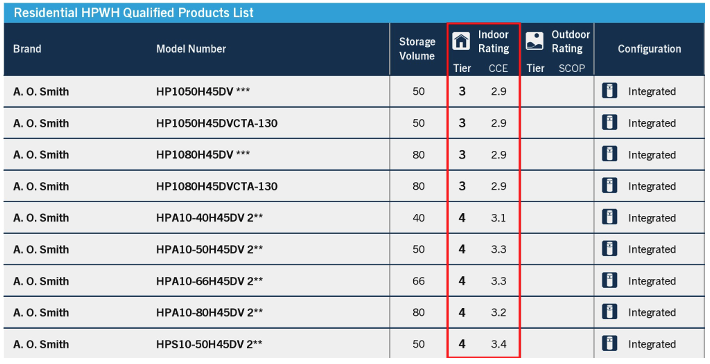As more homes move to heat pump water heaters (HPWHs), we hear from clients that some homeowners are still skeptical about making the shift. Their concerns aren’t always performance based, but rather they are concerned about noise levels. Water heater unit selection and design strategies can have a significant impact in reducing noise transmission.
The sound associated with HPWHs varies by make and model, but most are rated between 45db and 55db, similar to the noise level of many dishwashers or clothes dryers. If the HPWH is making noise at higher levels or if the unit is making rattling or high-pitched noises, the unit should be inspected for improper function. NEEA-rated water heaters have sound ratings, which can be helpful when selecting a water heater. To find the sound rating of NEEA-rated water heaters:
Visit the NEEA Residential Heat Pump Water Heater Qualified Products List
Review the Indoor Rating column
Look for HPWHs rated either Tier 4 or Tier 5 for the quietest water heater options
You’ll notice on the Qualified Products List that split system HPWHs, like Harvest Thermal or SANCO2, don’t list an indoor rating. These units can have the outdoor unit ground-mounted outside and located away from the occupant’s favored rooms, while the silent hot water storage tank with no moving parts can be located indoors and as close as possible to the hot water fixtures.
In general, regardless of which HPWH is specified for a project, there are some best practices that can help alleviate noise perceived by the occupants.
Install the unit in a garage or large utility room or closet that is acoustically isolated from the rest of the house. Don’t install units along bedroom walls or on the backside of bedroom walls.
Make sure the unit is installed on the ground level. Use R-10 rigid foam base (25 psi closed cell) on slab-on-grade construction. Additionally consider using a sound/vibration isolation base for installations on raised floors.
Use PEX piping between the unit and other non-flexible piping. Flexible PEX piping can help isolate sound transmitting into rigid pipe and other structural fasteners.
Use flexible seismic strapping or use sound/vibration isolation fasteners where the metal seismic strapping is attached to the structure.
If using duct kits, install flexible (R-6) ducts for all, or a portion of, the duct intake and exhaust and use sound isolation fittings at the duct terminations.
Original source: Rheem marketing material
For sound sensitive homeowners and occupants, consider using sound transmission class (STC) reduction construction techniques both at the sound source and at the receiver (occupant) favored spaces, in addition to the recommendations above.
A combination of these strategies can be applied to create a solution addressing noise concerns, without having to compromise on the energy efficiency benefits that come with installing a heat pump water heater in your project.




